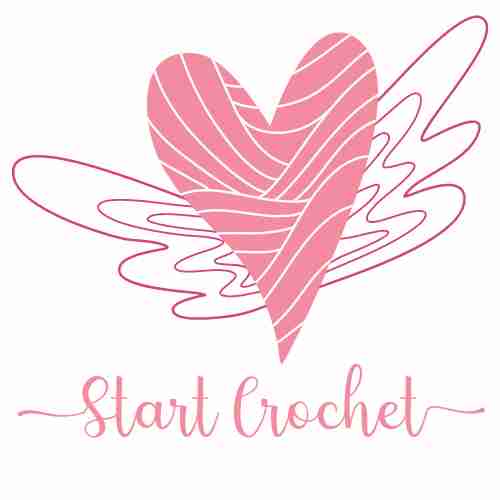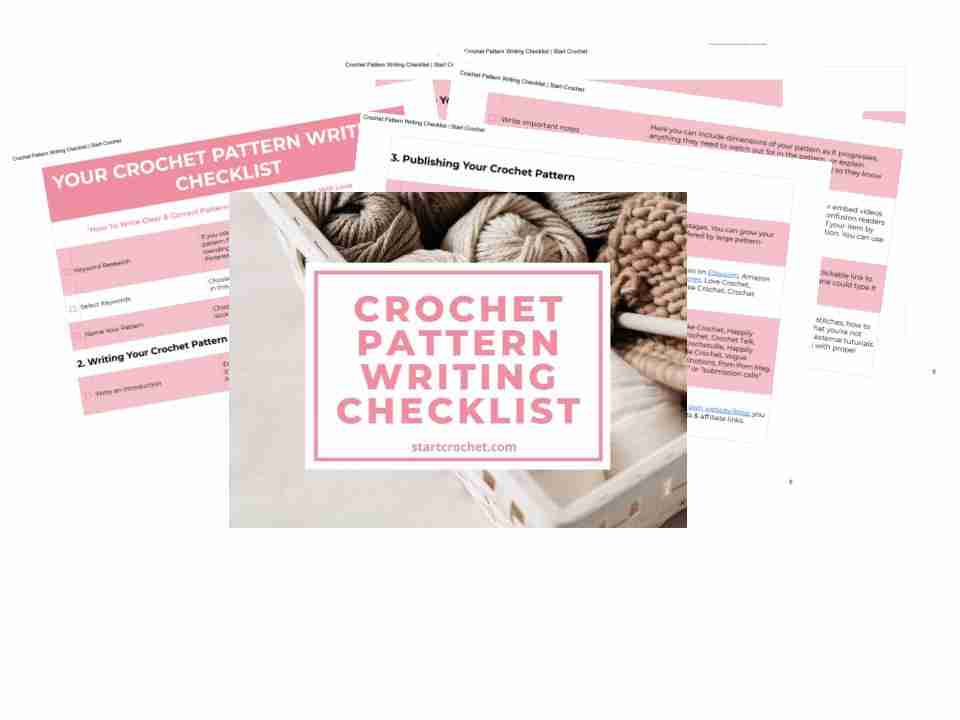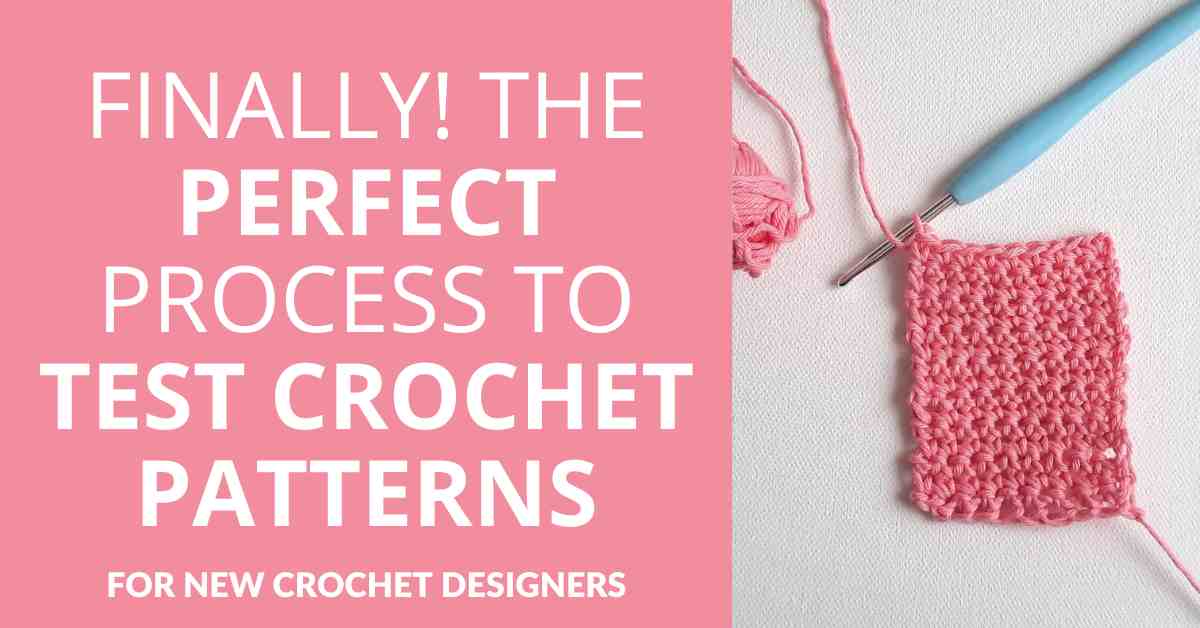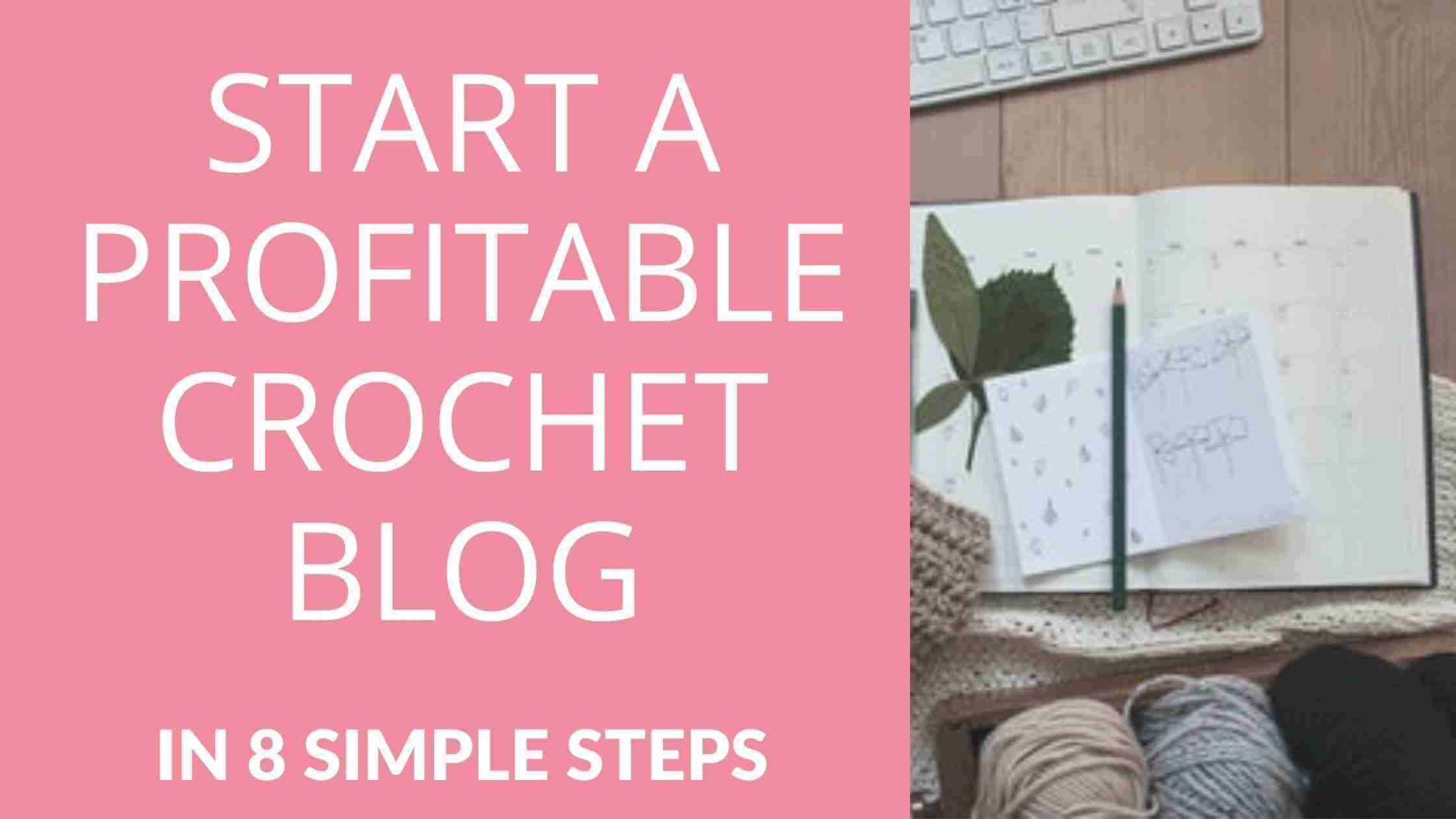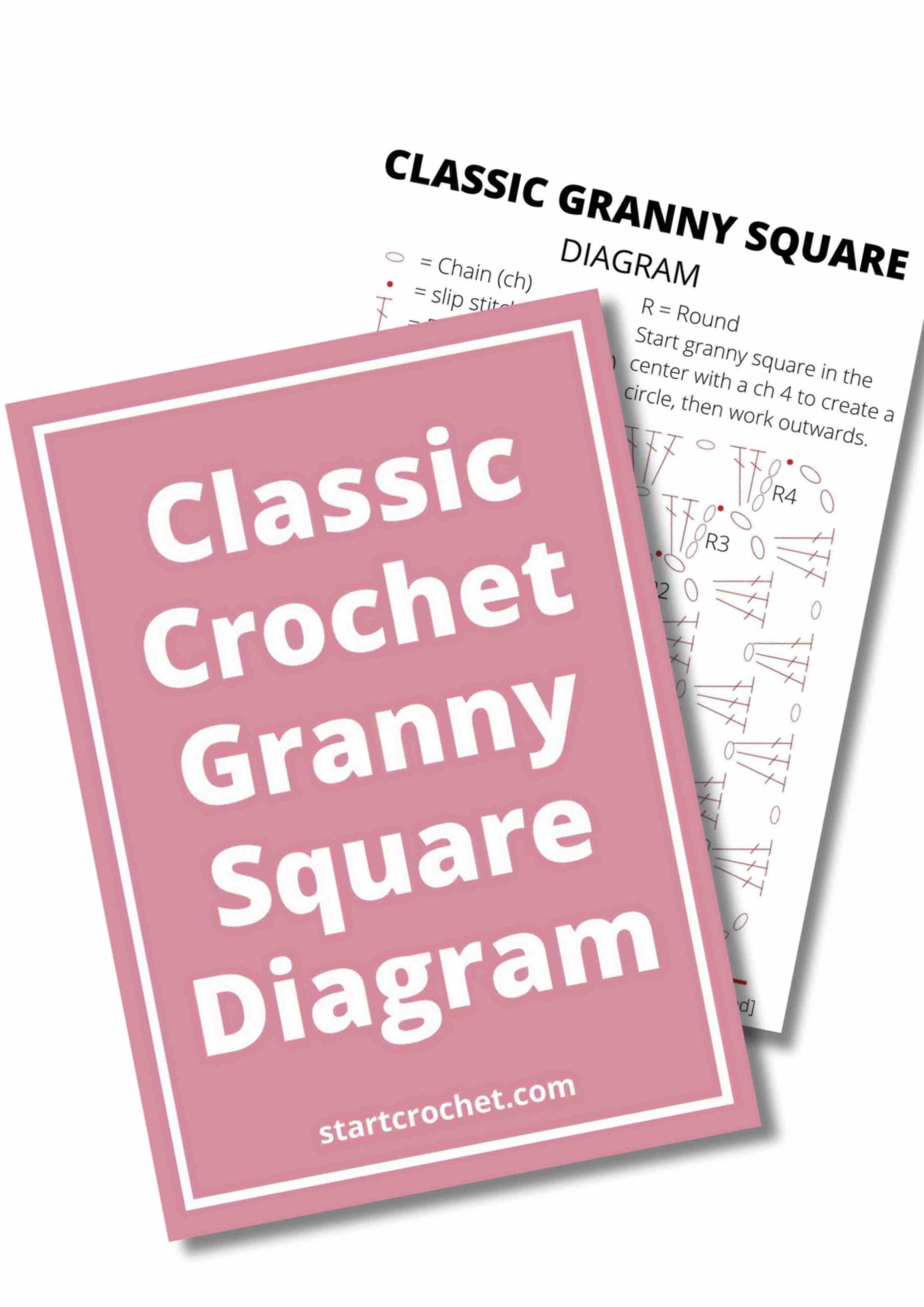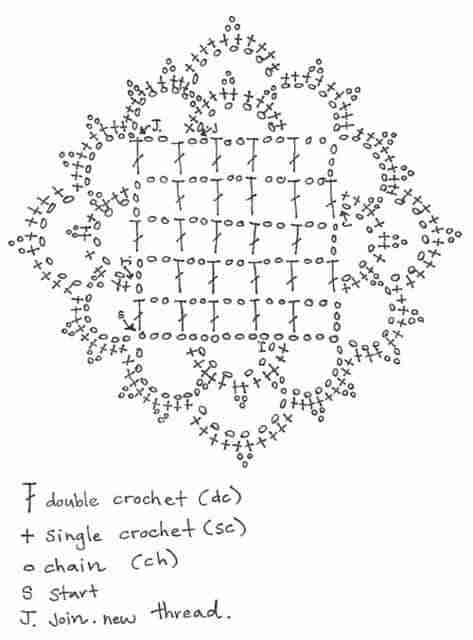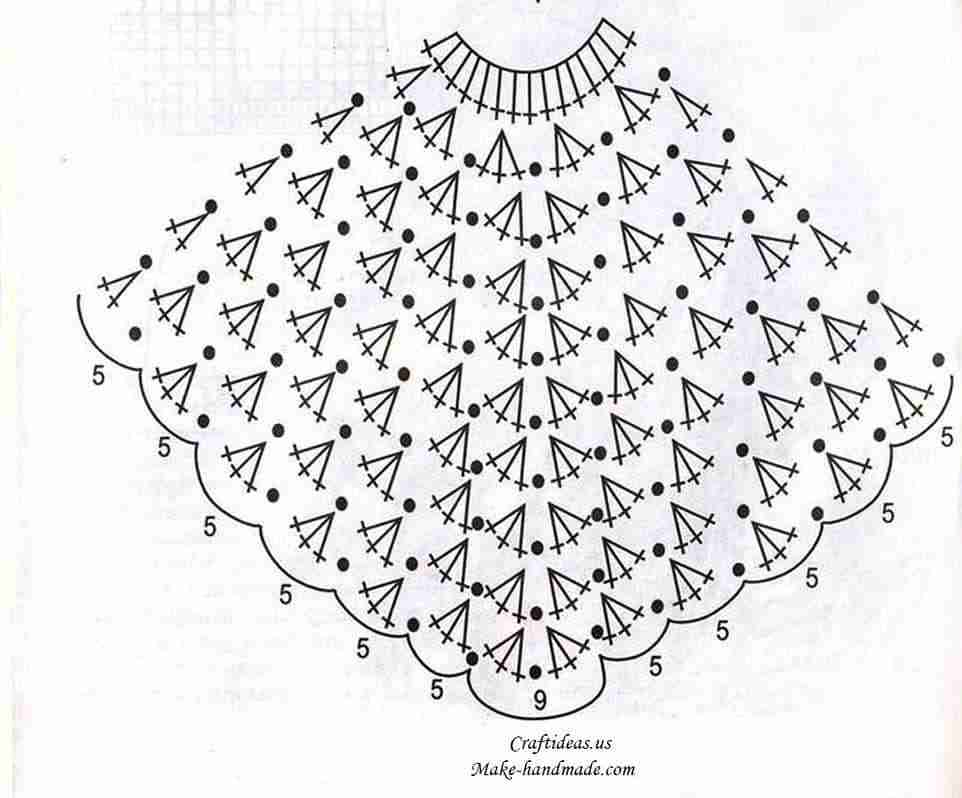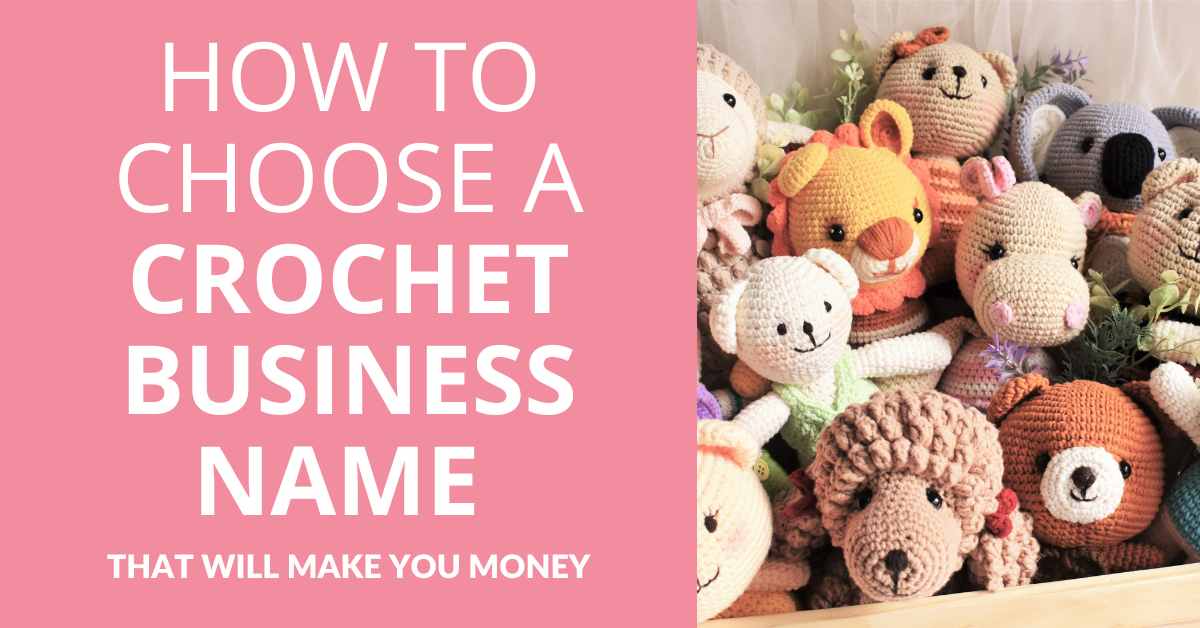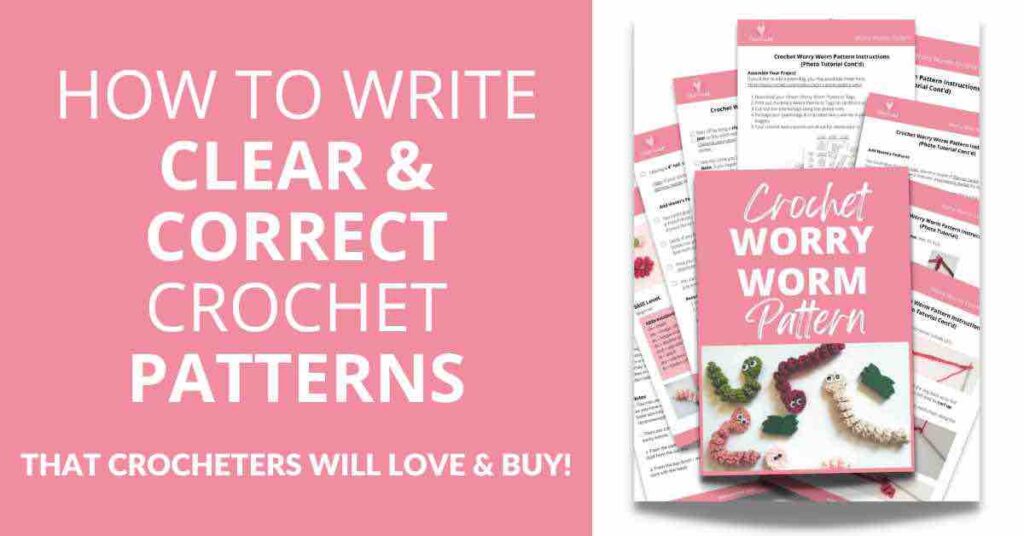
How To Write Your First Crochet Pattern
To Be Proud Of & Sell Online
+ Free Downloadable Checklist
Wouldn't it be amazing to write your first crochet pattern perfectly and sell it over and over again online?
No orders...
No shipping...
No returns...
No running out of time... or stock!
That's the beauty of creating a pdf pattern that you can sell online.
I was crocheting for about 5 years before I ventured into writing my first crochet pattern!
I always thought it would be too complicated...
that I wasn't good enough yet...
& that I really wasn't a crochet 'designer'.
But one day, I decided to take the leap and design my own projects!
I took courses, researched all there is to know about how to write crochet patterns...
I learned...
I took notes...
I practiced...
& I figured out how to do it.
So in this blog post, I'll share my findings with you to encourage you to take that leap into crochet pattern-writing.
It's quite easy if you follow the steps I'm going to outline for you here and you'll find it super rewarding too!
Sign Up For The Crochet Pattern Design
Mini Email Course (8 Days)
Would you like me to email you bite-sized actionable steps to take that will help you get your first crochet pattern published in 8 days? If so, please sign up below.
The important thing I personally focus on is writing patterns in a way that any beginner crocheter would be able to read & understand.
I like to spell out each step clearly & include as much info, details as possible so that one can't really go wrong.
I also include step-by-step progress photos of each Row or Round. This is optional, of course, but I do it because my target audience is beginner crocheters, so adding visuals really helps them a lot.
Chose the style of pattern writing you feel most comfortable with and get started today!
Just imagine how much enjoyment people will get from working up YOUR patterns! 🙂
You'll feel the reward when you start getting feedback. It's so much fun!
Subscribe To My Designer Newsletter
Would you like me to send you more tutorials, templates, & helpful tips & tricks for new crochet designers? Please enter your Name & Email below 🙂
Disclaimer: This post contains affiliate links, which means I receive a small commission, at no extra cost to you, if you make a purchase using the Start Crochet links. Please see my disclosure for more details.
1. How To Start Writing Crochet Patterns
Before You Start Writing Your Own Crochet Pattern (Research Phase)
There are a couple of things I suggest you do before your start writing a crochet pattern. This all depends on your purpose, of course. If you feel like writing a pattern for your own use, that's one thing, but if you intend to publish your pattern & are looking for people to purchase it, that's a whole other ball game.
Trends & Keyword Research
So if you're set on selling your crochet pattern, then it's best to write a pattern for items that are in demand. You don't want to go through the effort of writing a pattern for something that no one wants to buy.
If you're selling on 3rd party platforms like Etsy, for instance. You'll want to do keyword research on there. Check what's trending, what's high in demand in your niche, and see if there is a crochet pattern that you can design that fits this trend.
How To Find Etsy Trends
The simplest way to find what's trending on Etsy is to use the autocomplete feature. Basically, you type in the root word into the Etsy search bar and see what suggestions it gives you in the drop-down. From there, you can either pick something or start typing one letter of the alphabet at a time to see what comes up.
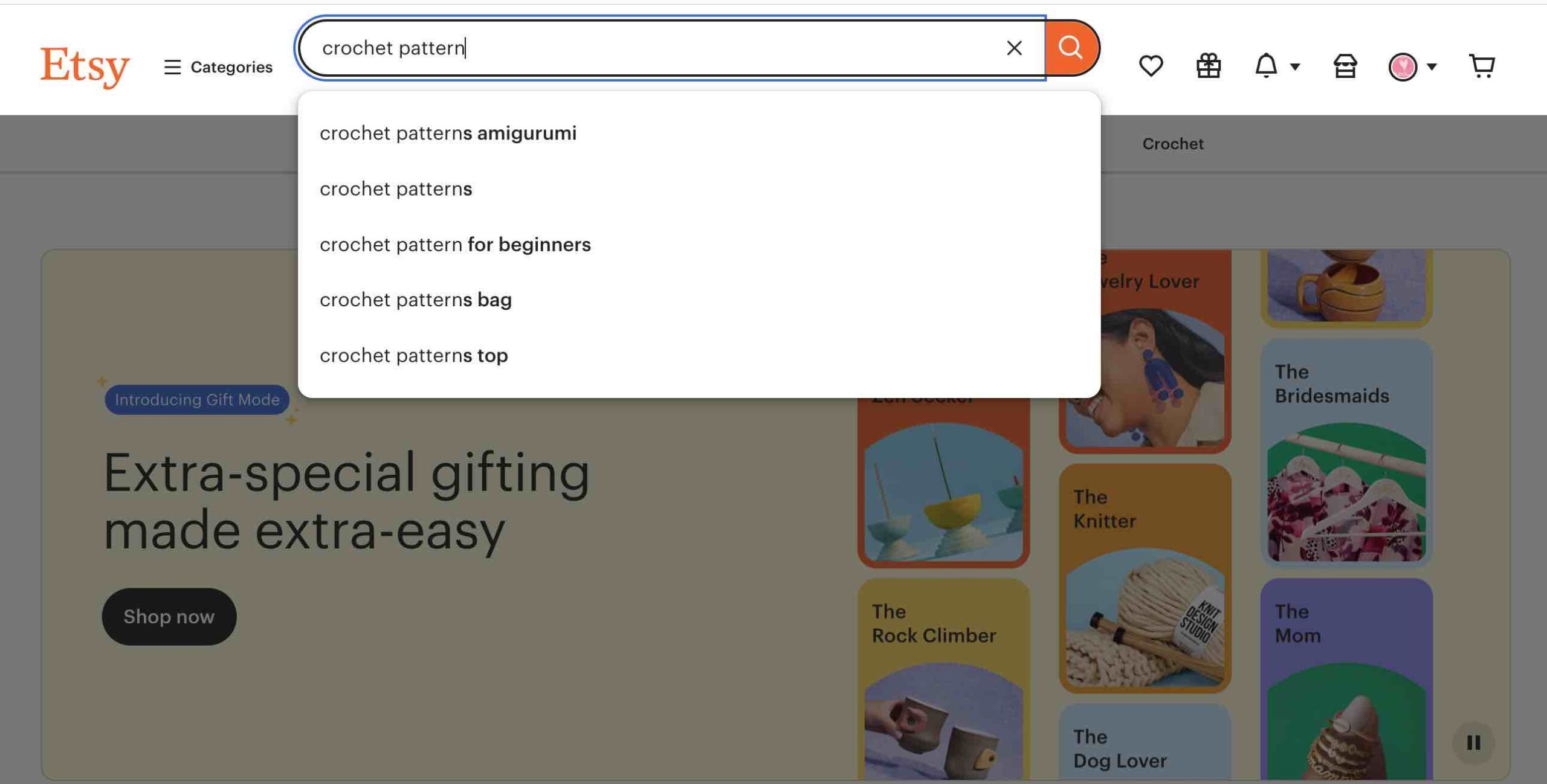
I typed in "crochet pattern" and a "bag" would be a good fit for me to design. If there's nothing that you think you can design in this drop-down menu, try typing letters "a", "b", "c" etc. to see what comes up.
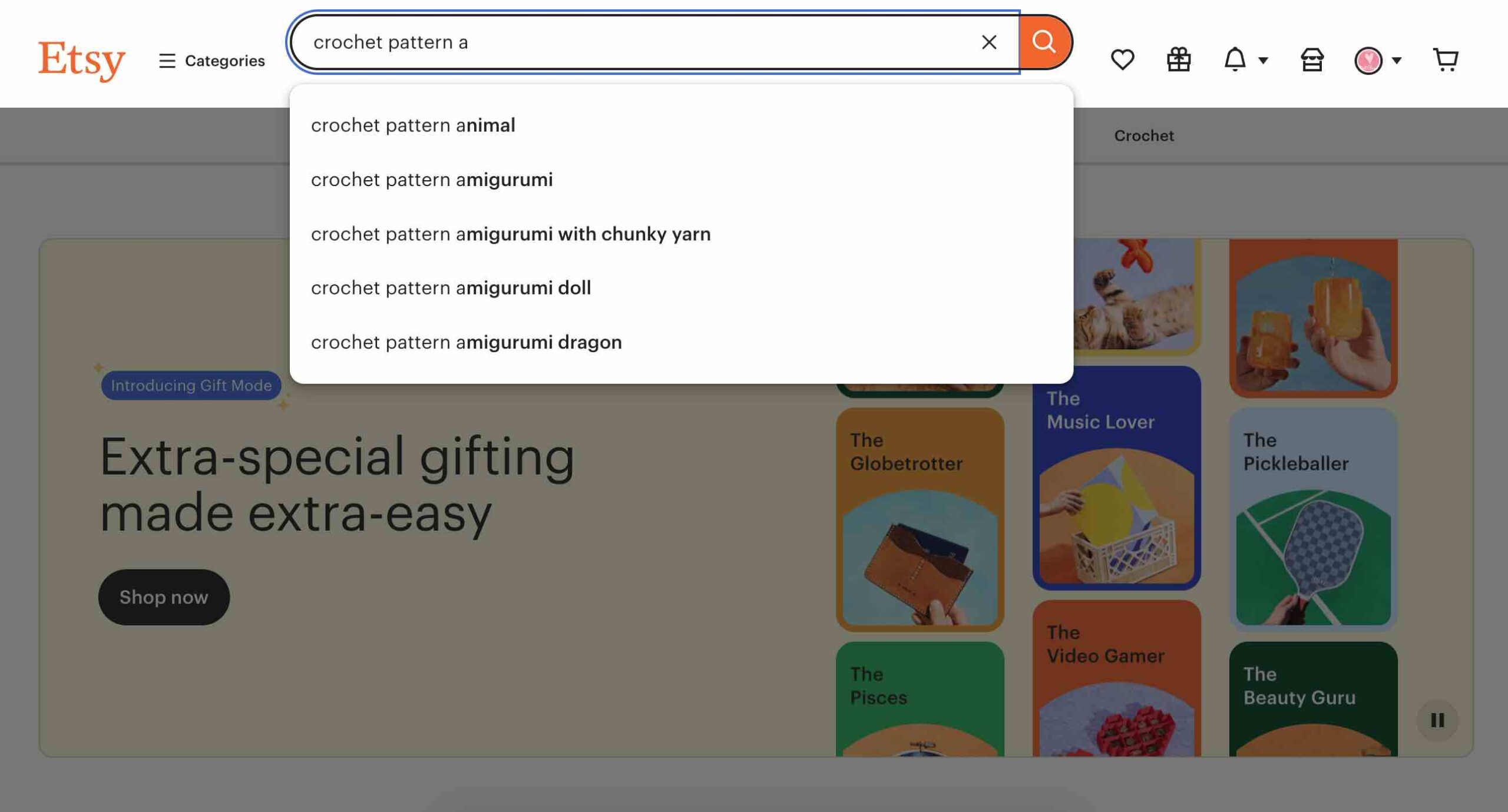
Here I typed the letter "a" and it gave me a few suggestions. I could choose one of these and know for sure that this type of pattern is in demand on Etsy.
Etsy Keyword Research Tools for SEO
If you're looking for online tools to help you with your Etsy SEO keyword research, there are a few to choose from. Some are free, others offer a paid subscription with a free trial.
- Keyword Tool (free)
- eRank (free trial)
- EtsyHunt (free trial)
- Alura (free trial)
- Sale Samurai (free trial)
- EverBee (free with sign-up)
- Marmalead (free trial)
Keyword Research for Your Blog
If you have your own blog, this is what I recommend you do...
Check trending keywords to see what's in demand. Use:
You can also use the autocomplete function on both these platforms just as I showed you above on Etsy. This will show you the latest up-to-date queries actual people are typing in to the search bars. This is super valuable information.

Type in your search term into the Google search bar and see what the autocomplete suggestions are. You can go deeper by adding letters of the alphabet after your query to get more results.
Then once you know what's trending, see what crochet pattern you can create that would work well with this trend, then go deeper and check keyword variations on keyword research tools to help you market your product (listed below).
You want to be looking for high-volume, low competition keywords that you could rank for. Not only that, but you have to keep in mind relevance & user intent.
Some SEO experts say that it's sometimes good to go for zero-competition keywords. That also makes sense because if you invent and create a product that no one is competing with, you're bound to show up as #1 on Google. The only catch there is that you'll have to market that product and drive traffic to it yourself.
Here are some other tools you can use to help you with Keyword Research:
- Keyword Planner tool by Semrush
- Keyword Tool
- Keywords Everywhere (Chrome Extension)
- Ubersuggest
- Mangools
Once you've got a keyword you're ready to work with, try to go even deeper and see what questions people ask about this keyword and try to include answers to these questions in you blog post. Have a look at these:
- Google Search "People also ask" section.
- Answerthepublic.com
- AnswerSocrates.com
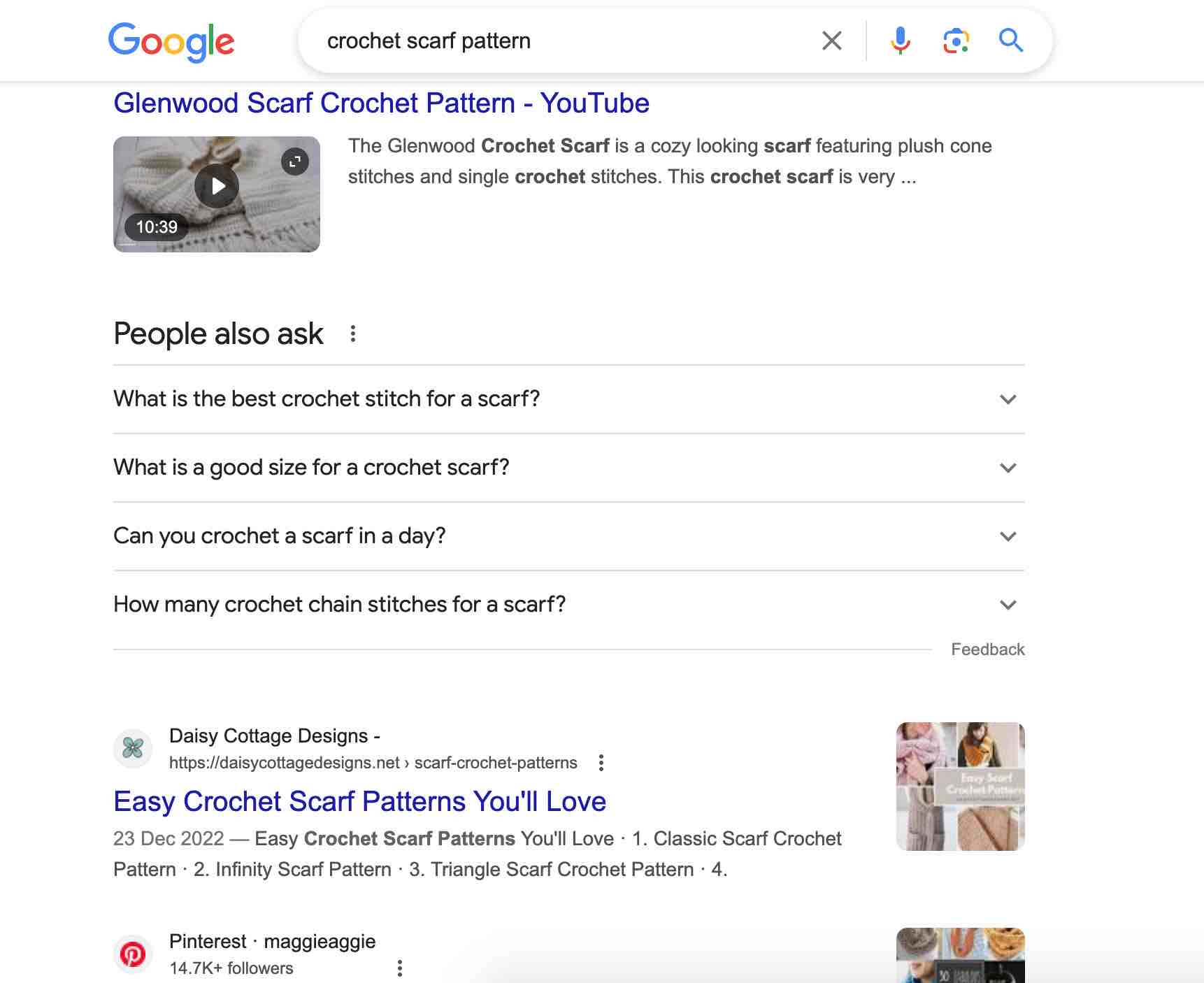
Scroll down a little on the google search results page and you'll find this "People also ask" section. Use these questions as headings in your blog post and answer the questions concisely for a chance to get on the featured snippet.
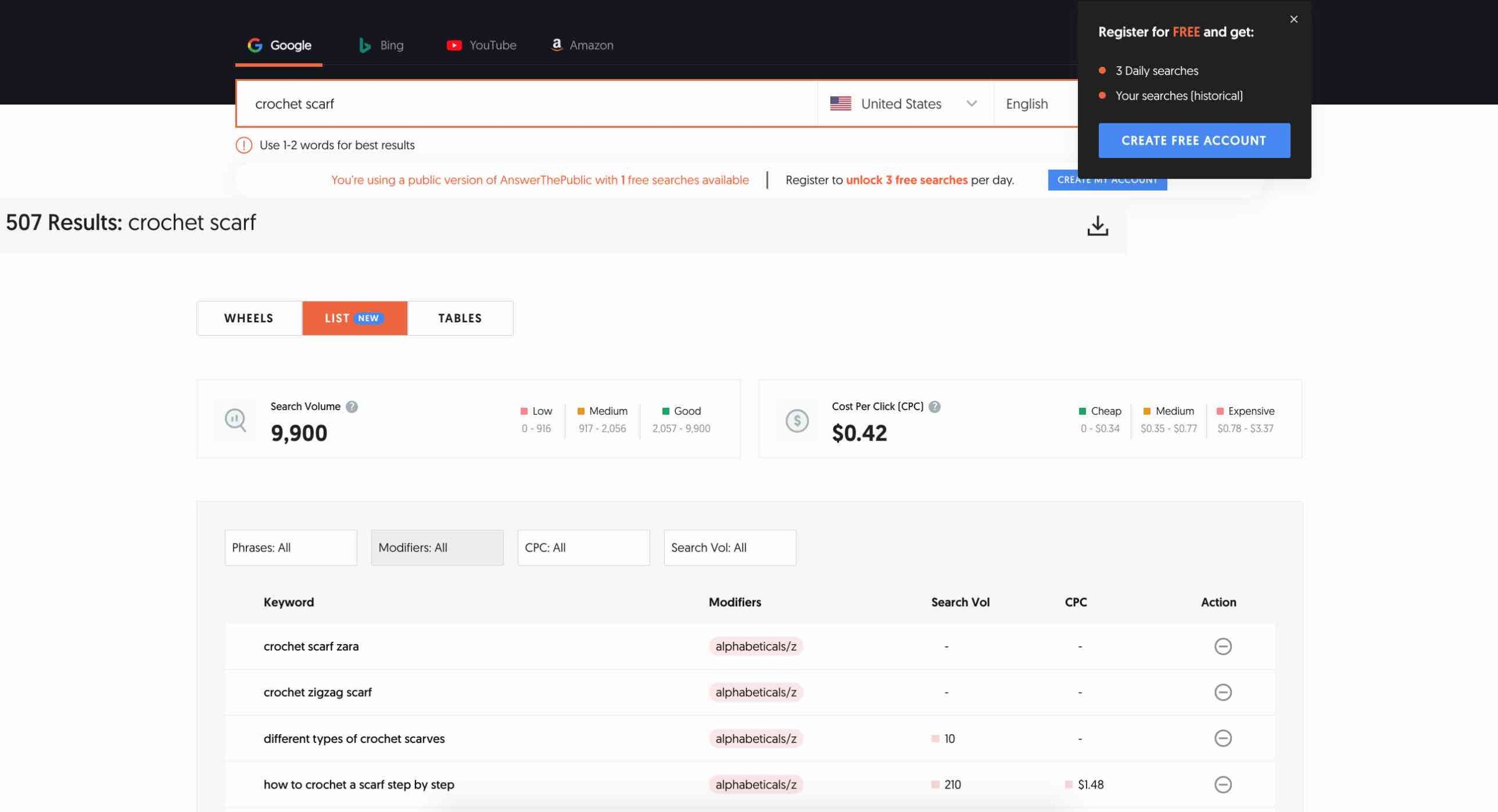
Here I typed in "crochet scarf" and it shows me the search volume, Cost per Click and Difficulty level for ranking for this keyword variations listed in the Keyword section. You can see these keyword variations in "List View" or you can see them all as a "Wheel" (see image below). You get a limited number of searches per day on this tool with a free account.
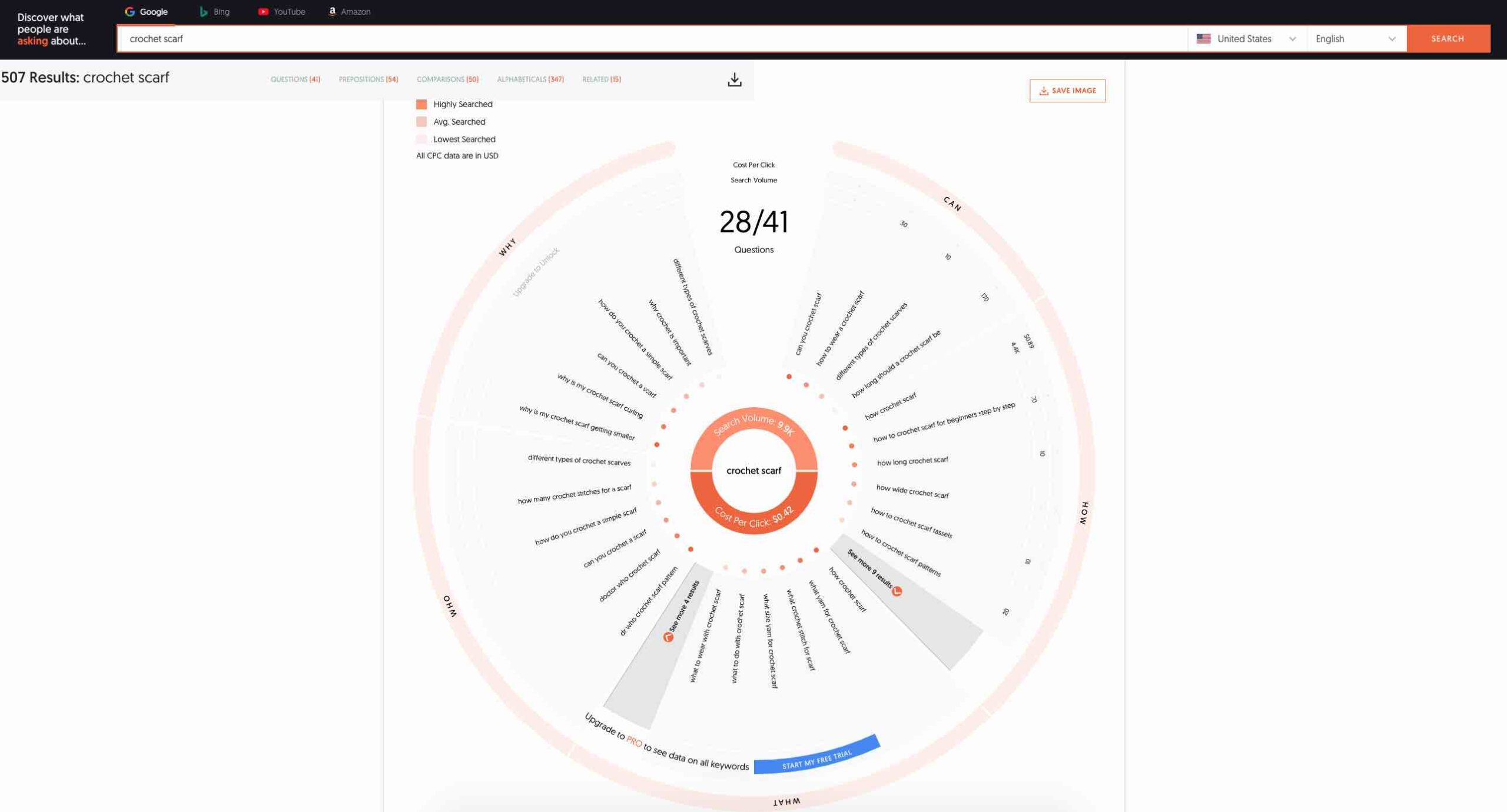
Select Keywords
So now that you have this information and you chose a trending keyword for a crochet pattern or patterns people are interested in this season, make sure it's one you feel you can write a crochet pattern for and would fit your customer base.
Once you've chosen this item, you can move forward.
Name Your Pattern
Choose a good name for your project, something that'll stand out and stick in people's minds. Don't just call it what it is! Spice it up a bit with intriguing words.
Crochet Pattern Writing Checklist
Free Printable
By getting this freebie you agree to receive occasional emails from me. Please see my Privacy Policy.
2. Write Your Crochet Pattern
Write an Introduction
Entice your reader to try out your pattern by telling them a little back story. You could share a personal story with them... just a couple of sentences, not more.
It's also a good idea to explain what this crochet project is exactly, who it’s for, and how they can use it. Point out the sizes you're including or how they can adjust sizing.
Include cover photo
Take a photo of your finished product and include it at the beginning of your pattern. The more professional your photo, the more people will want to check out your pattern.
If you don't have a clue how to take nice product photos, you can do some online research or improve your DIY Photography Skills with this course.
You really don't need to have fancy equipment for a good product photo these days. If you have a smartphone, all you need to figure out is how to use it to take the best shots of your projects.
Write list of materials
Write up your list of materials needed for this project in detail:
Yarn: brand/company name, color, weight, quantity required to complete your pattern & where they can purchase it.
You can use this Crochet Yardage Calculator to figure out how much yarn your project needs.
Also include any yarn substitutions if the one you're recommending isn't available for any reason. You can use the YarnSub website to find this information.
Hook size: Write hook size in mm, US letter, and/or # crochet hook
Conversion Sheet
Free Printable
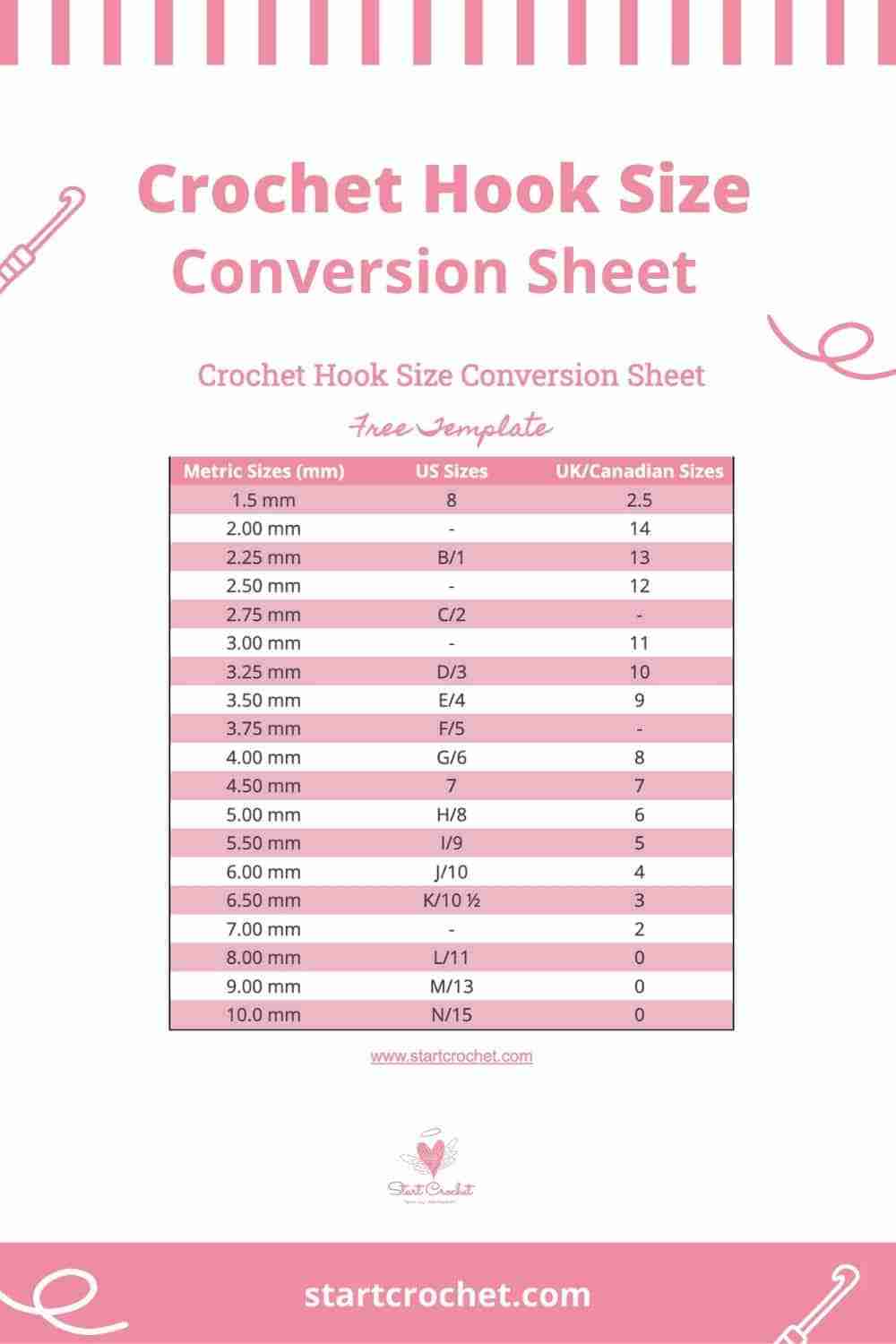
Your info is 100% secure and will never be shared.
Also include any of the following materials if needed: scissors, tapestry needle, stitch makers or pins, polyfill, buttons, zippers, holders, etc.
Write size & gauge
Gauge is important so that your customer's finished product ends up having the same measurements as yours.
To create your gauge, crochet a certain number of stitches for a certain number of rows (eg. crochet with a 4.5mm hook 15 single crochet stitches for 15 rows and you get a 4″ by 4″ square).
Then when someone follows your pattern, they should get the same measurements. If theirs is smaller, they'll have to loosen up their tension or go up in hook size (or vice versa) until their gauge matches yours.
Write difficulty level
Here you state whether your pattern is for beginners, intermediary levels or advanced crocheters. Many designers skip this part, but it is crucial to include it!
Write terms & abbreviations used in pattern
Write in point form the list of stitch abbreviations & terms you're using in your pattern.
Make sure you stay consistent with the formatting you use to write your instructions: capitlizations you use for your stitch names, punctuation, repeat indicators, etc.
CROCHET TERMINOLOGY &
STITCH ABBREVIATIONS
Free Printable
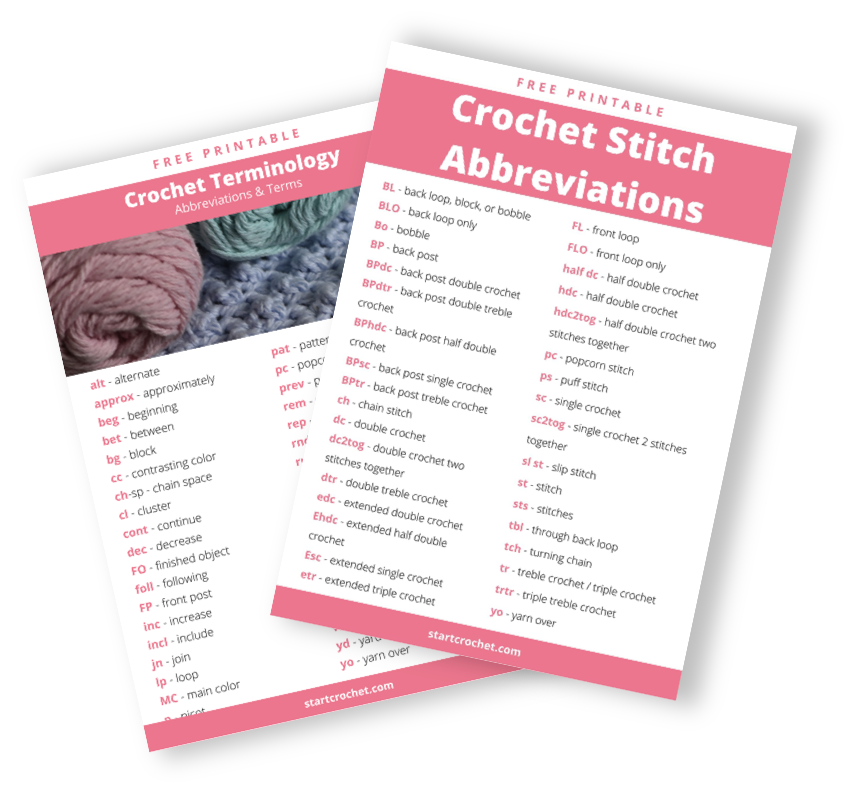
Write important notes
Here you can include dimensions of your pattern as it progresses, anything they need to watch out for in the pattern, or explain something to the reader before they start the project so they know what to expect.
Add visual elements
Add progress photos, pictures, graphics, charts and/or embed videos.
The more pictures you include, the fewer questions/confusion readers will have.
You might want to highlight certain parts of your item by circling them or adding arrows to pinpoint an instruction. You can use Canva.com to add these elements.
Include link to video tutorial (if available)
If you've made a video tutorial for your project, add a clickable link to your pattern.
Also include the actual url so that someone could type it up in case they've printed out your pattern on paper.
Include links to external instructions
To help your reader figure out how to work up certain stitches, how to block the project (if required), or how to do anything that you're not explaining within the pattern, you may want to link to external tutorials to guide your reader.
Make sure to reference your links with proper credits, and if you're using Affiliate Links, to disclose this in your pattern.
Write your pattern Instructions (Method)
As you physically work up your pattern, write down every single step along the way using the necessary terms & abbreviations. Make sure to indicate whether you are using US or UK Terms (see printable below).
Include instructions for each stitch, row, round, turn, tying off, switching colors, leaving a long tail for weaving in etc.
US vs. UK Crochet Terms & Symbols
Free Printable



Your info is 100% secure and will never be shared.
Use the correct crochet punctuation: Use punctuation to tell your readers how to work each stitch & when. You can use punctuation to either group or separate stitches.
- Grouping stitches: Use either [brackets ], (parentheses) or asteriks * if you want to indicate working more than one stitch in the same stitch before moving on to the next stitch or to point out sections that need to be repeated in the pattern. Eg. * SC 1, DC2* until the end, which means these instructions between the asterisks should be repeated till the end.
- Separating stitches: Use either commas, semi-colons or dashes.
Stitch Count: At the end of each row, make sure to include a stitch count in brackets (x) to make it easy to check if one has the right number of stitches at the end of each row.
Explain as much as possible if there are any special instructions you'd like to give to clarify something.
I personally found it quite difficult at first to put into words what I wanted to instruct my readers to do, but with practice & feedback from others, I was able to clarify this quite well.
Finishing
Write any further instructions on how to finish the project (if it needs blocking, edging, or weaving in ends, for example).
Write your conclusion
It's good to include a conclusion at the end of your patterns.
Perhaps you can thank the reader for supporting you, invite them to follow you on social media, or encourage them to share pictures of their finished pieces and tag you.
Your name & social contacts
At the end of your pattern, make sure you write your name and how crocheters can reach you if they have any questions.
Also include your social contact info if you have an Instagram account, Ravelry, Etsy shop, website/blog, etc.
Include a brief biography of yourself with a photo.
Write Disclaimer
Not every designer does this, but I would advise writing a short disclaimer at the end of your pattern stating that you are not liable for variations in the finished product. This is to protect yourself from buyers who might claim that their product worked up differently from yours.
Include your copyright© information
Write your copyright info at the end of your pattern. © Designer name, year/Date, Version Number, month/year
Your copyright© should state that the pattern & photos are your intellectual property. The reader is not permitted to sell or share the pattern in any way.
If you give the reader permission to sell the finished piece, you will include that in your copyright, but ask that they credit you for the design.
Review your pattern
Read your pattern, edit, fix errors & make necessary changes.
Make sure it makes sense. I tend to work up my pattern again following the instructions I wrote step by step and more often than not, I realize that I forgot to mention something. So add these details in when you go over it one more time.
Test your pattern
After testing your pattern yourself, you can ask friends to help or ask for testers on FB and Instagram. I use this Crochet Pattern Tester FB Group, and use #crochetpatterntester hashtags on IG.
You can give your testers an incentive to test for you like a free pattern from your shop or some other form of compensation for their valuable time and feedback.
A coupon to choose something for a certain value from your shop works well.
You can also hire professional crochet pattern testers on online platforms like Fiverr.
For a detailed step-by-step explanation of how to test your crochet patterns, have a look at this post .Finally! The Perfect Process for Crochet Pattern Testing (Step-by-Step Guide for New Designers)
Tech edit your pattern
It is recommended to have your crochet patterns tech-edited by a professional to check for mistakes and make sure all the numbers add up correctly. This service is normally paid, so you should reach an agreement with your tech editor before you assign this job.
There is some debate on whether a pattern should be tech-edited first or tested first, but either way, you should do both.
Formatting
Now that you have your pattern ready, you should type it up nicely and include all the relevant images, copyright info and your bio in a PDF document.
You could do this on Google Docs or use Canva.com to make a more stylized professional-looking document.
Marketing Materials
You will also need to design some marketing materials to showcase your pattern and upload it to different social media platforms.
Consider creating Pinterest images/videos, FB/IG images or reels, TikTok or YouTube videos.
You could design these on Canva.com with a free account. You'll get pre-designed templates that are easily editable to create stunning marketing images.
You could also upgrade to the paid version of Canva.com and get MANY more options including AI assisted design and LOTS of functionalities with other apps connected to Canva.
You could also use beautiful fonts and clipart from Creative Fabrica to make your pin images and other designs shine.
If you intend to submit your pattern to crochet magazines, also prepare some images for this.
3. Publishing Your Crochet Pattern
Publish your crochet pattern for Free Download
Posting your pattern for Free has its advantages. You can grow your audience through the wide distribution offered by large pattern-sharing sites like
Publish your crochet pattern for Paid Download
If you'd like to sell your pattern, you may do so on
- Etsy.com,
- Amazon Handmade,
- Lovecrafts.com,
- Ravelry,
- Love Crochet,
- WeCrochet,
- YarnSea
- Gosadi (membership site)
- I Like Crochet,
- Fave Crafts,
- Crochet Pattern Central,
- Crochet Patterns Galore
Submit your pattern to a crochet magazine
- WeCrochet Magazine,
- Crochet! Magazine,
- I Like Crochet,
- Happily Hooked Magazine,
- Interweave Press,
- Inside Crochet,
- Crochet Talk,
- Crochet Foundry Magazine,
- Crochet At Play,
- Crochetville,
- Happily Hooked Crochet Magazine,
- The Yarn Box.
- Inside Crochet,
- Vogue Knitting, .
- Crochet World,
- Interweave Crochet,
- Knotions,
- Pom Pom Mag.
Search these websites for “designer guidelines” & “submission calls".
Publish your crochet pattern on your own website/blog
If you offer your crochet pattern for free on your own website/blog, you can generate extra income through advertisements & affiliate links.
You can also sell you PDF patterns directly from your own site through WooCommerce, ThriveCart or Shopify among other integrations.
4. Promote Your Crochet Pattern
Share your pattern
Share your pattern with your friends & followers on:
- FB Groups (recommended Ravelry Free Pattern Alerts - Crochet Only) - this has to be a Ravelry link to a free pattern. You can offer a promotion to get eyes on your new pattern.
- TikTok
- YouTube
- X (Twitter)
- Forums (read guidelines)
- Email List (most important!)
Here are some more ideas on how to market your crochet patterns.
5. Join Crochet Designer FB Groups
It's really beneficial for you as a new designer to join FB Groups that are exclusive to crochet designers.
You can meet like-minded people from all over the world, exchange ideas, ask questions, submit your patterns to roundup requests from other designers, join blog hops, and you can also vent when something doesn't go as expected in your designing journey.
Here are a few Designer FB Groups you can join:
- Crochet & Knit Blogger Social
- Crochet Designer Community Group
- Crochet Pattern Testers and Designers
- Crochet Designers - Events, Blog-hops and Round-ups
- Crochet & Knitting Designers & Testers
Comments
Check comments section of your post on your blog or social media every few days to answer people's questions.
Frequently Asked Questions (FAQs) About Writing Crochet Patterns
What do crochet symbols mean?
Crochet symbols are visual representations of a crochet pattern, a universal language that allow an alternative way of reading patterns.
This means that instead of (or in addition to) writing your crochet pattern in words using crochet abbreviations, you could also include a crochet diagram using a symbol chart.
In symbol crochet, each stitch is represented by a little symbol. Have a look at these crochet symbols below.
Note: As you might already know, there is a difference between US & UK Crochet Terms & Abbreviations, so using a crochet diagram would offer an alternative way to reading your patterns that is accessible to everyone who can read the symbols used (which would be a good thing to increase your sales).
What are crochet diagrams?
If a reader looks at the crochet diagram, they will see at a glance how the finished crocheted piece will look like.
If you want to include a crochet diagram to the written version of your crochet pattern, you need to arrange the symbols of the stitches used to form a "Picture" of the project.
Crochet diagrams can either be created manually or by using a software like StitchWorks. There is a bit of a learning curve to get used to using StitchWorks, but if you feel like giving that a shot, it might come in handy for simple projects.
You could also use Canva to draw out your crochet diagram. This is not a dedicated crochet software, but it is possible to create good diagrams using Canva. Here's an example of a Crochet Granny Square Diagram I've designed on Canva (image below).
You could also create manual crochet diagrams using hand drawing. For this you'll need a pencil, notebook, & eraser. You can sketch out your pattern. You can erase and adjust as necessary until you are happy with your design.
If you feel your design looks good in hand-written form, you can go ahead and publish that with your written pattern.
But if you want to make your diagram look more professional, you may want to use a vector charting software such as Adobe Illustrator (paid product with free trial) or Inkscape (open source).
You could also download crochet symbols from Creative Fabrica to use in your diagrams.
How much do you have to change a pattern to avoid copyright Infringement?
Well, this is quite a sticky topic and from my research haven't been able to find a clear answer to that. There are so many factors that have to be considered that this really needs proper advice from a legal professional.
All I could gather is that the commonly perceived 30% rule of changing a pattern for it not to be considered copyright infringement, is generally false.
But in a nutshell, a crochet pattern is a written document that would essentially be protected under UK copyright law as a 'literary work' even if the pattern is made up of numerals & symbols rather than words.
If the pattern includes photos, illustrations and/or charts, then these would be protected by copyright as 'artistic works.'
Here are some reputable resources you can check out:
Patterns and copyright protections: The Ohio State University Library
Copyright notice: knitting and sewing patterns: The Intellectual Property Office UK
Top 10 copyright myths: Copyright Service UK
Can a pattern be copyrighted?
The short answer is Yes, you can definitely copyright your crochet pattern.
Depending on where you live, though, rules change. But if you reside in the US, it is generally accepted that as soon as you write up & publish a crochet pattern, it is essentially copyrighted.
If you feel like you need specific copyright protection, you can do this formally by registering your pattern with the U.S. Copyright Office.
Copyright Registration for Pictorial, Graphic, and Sculptural Works
Legal Zoom: How to Copyright a Design
Can ChatGPT Write Crochet Patterns?
The short answer is NO! While you can ask ChatGPT to write a crochet pattern for you, it will start by offering a guidance on the steps to create a pattern. But if you ask it to write a pattern for an actual project, it will create an output that looks just like a real pattern, but when you actually work it up, it will look misshapen and absurd. Have a look at this article by CNN showing the results of ChatGPT crochet patterns.
Recommended Resources:
Books: Design Your Own Crochet Projects by Sara Delaney
And if you're thinking of starting your own crochet business, have a look at this post to learn the secrets behind choosing the perfect name.
Conclusion
Hopefully I've been able to show you what steps you need to take to write you first crochet pattern.
As a Bonus, I've also prepared a downloadable checklist for you that you can keep handy when you come to write your crochet patterns. You can instantly access it for free below.
Crochet Pattern Writing Checklist
Free Printable
By getting this freebie you agree to receive occasional emails from me. Please see my Privacy Policy.
